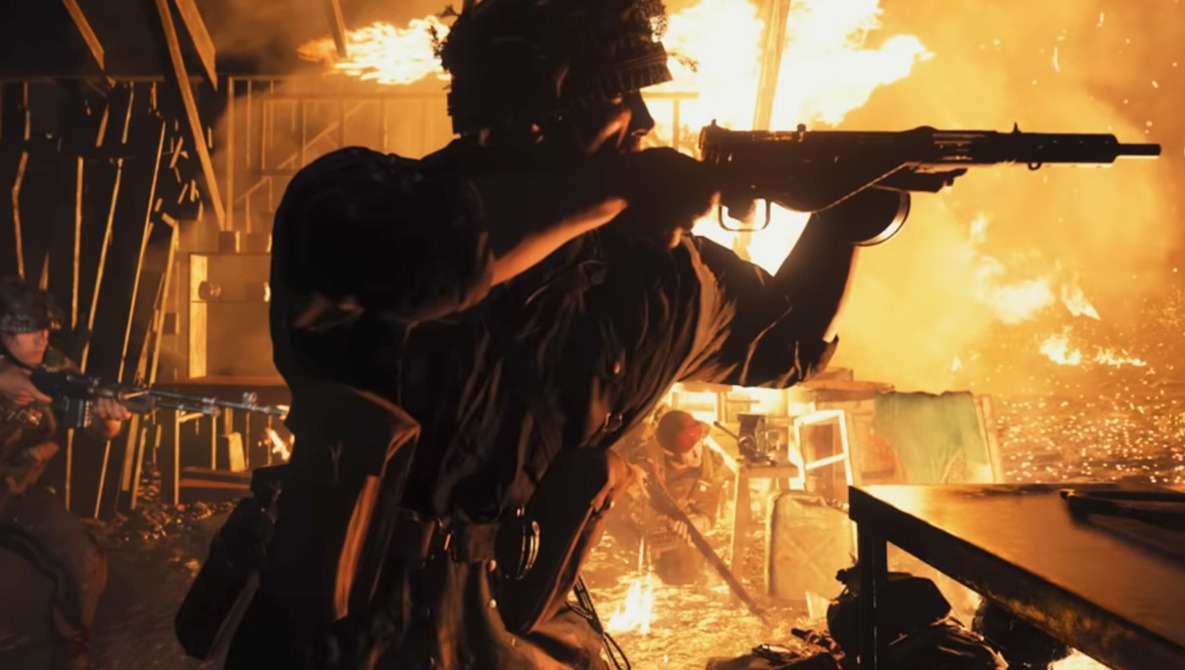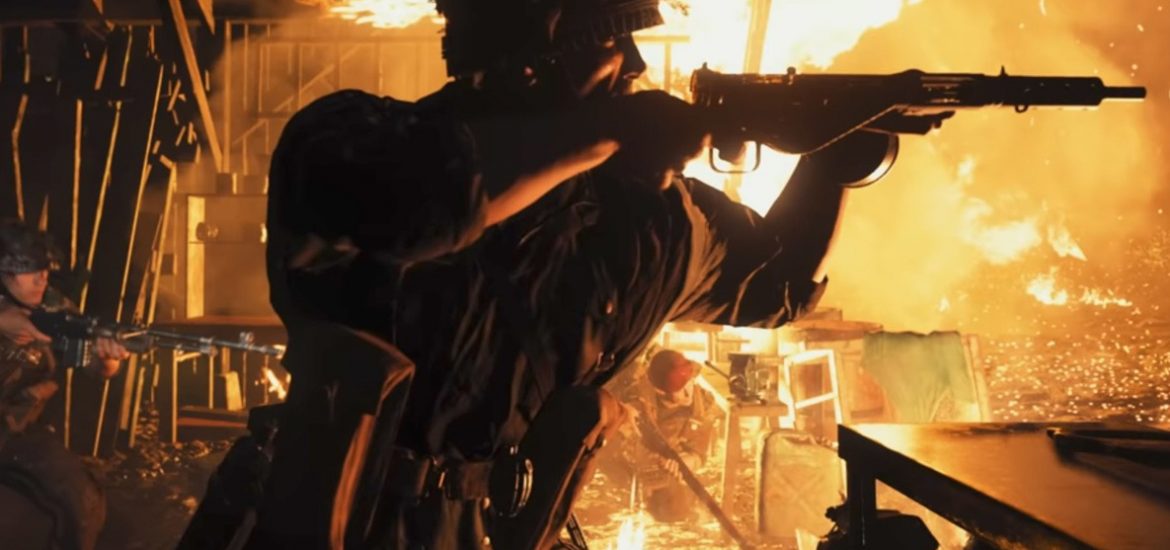
In a few days, Activision will launch the 18th installment of Call of Duty, returning players to the Second World War. To market the game’s new photography mode, two conflict photographers were immersed inside the virtual world and tasked with photographing it. The resulting commercial portrays mankind’s most brutal act of self-destruction as little more than a game of football.
For its ad, Activision invited two respected conflict photographers to wander through its motion capture studio and experience the recreation of World War II, taking photographs on a virtual camera — “a portal into the game engine,” according to the game’s senior visual director, Michael Sanders. “Not only does it transcend them into the game engine, but back in time, as if they were a photographer there, in the period.”
In-game photography is nothing new, and while Activision’s decision to use this feature as a marketing gimmick is not unusual, its presentation is a reflection of how video games can trivialize brutality and annihilation. “What war do you wish you could photograph,” the photojournalists are asked, making the death of 20 million soldiers and 40 million civilians sound more like some legendary game of football. The idea that anyone could “wish” that they had been present in a war zone to take some cool photos demonstrates the extent to which popular culture has transformed war into a consequence-free spectacle designed for mass consumption.
“As someone who spent a decade photographing war and conflict for Reuters and the AP from 1989-1999, this is very disturbing,” wrote former photojournalist Santiago Lyon in response to the commercial.
Historically, war’s distance has often made it seem unreal or unfelt, and on many occasions, photography has played a critical role in shifting public consciousness. Somehow, the still image brings a degree of reality to conflict as its stasis on the page, giving it a weight that can’t be ignored. Nick Ut’s image The Terror of War — also known as Napalm Girl — is an example, one of many images that brought the reality of the Vietnam War into American homes.
As a video game, Call of Duty’s latest iteration is nothing new. Game designers have always embraced violence, depersonalizing, and gamifying war, and while they might be criticized for glorifying bloodshed, these games perhaps also act as a useful surrogate or even as a means for society to process trauma.
What differs is how Activision’s commercial has co-opted war photography, a medium that has long sought to make us feel. By conflating the work of real conflict photographers with a video game that enjoys its violence, the commercial threatens to undermine the inconvenient and oft-avoided truth that war is a futile mixture of pain, suffering, and death on an unimaginable scale. These unreal images of war convey all of its awe and none of its horror, and photojournalism is reduced to being little more than a trivial hunt for trophies.
